Integrating a New Cat Into Your Home - the Final Touches
It takes time, supervision, closed doors, and some strategy to introduce a new cat into your house.This blog post assumes that you're already familiar with the general protocol used to introduce a new cat. At some point you're going to see that your cat(s) are just about ready to accept your new kitty, and your strategy may need to change at this point. Over multiple play sessions I have finished the integration of two cats using only toys and "forts" for the cats to hide in, and this blog post describes my technique.
When I introduce a new cat I follow the separation protocol as closely as I can. I play with each cat individually during this time, and begin to learn what toys the new cat responds to. I'm particularly interested in the cat's response to laser and wand toys.
When the two cats are beginning to spend time in the same room, I get those toys out. I will wait until that magical hour when both cats really want to play because when cats are in this mood, they tend to focus more on that need to play than on anything else, and then I get the toys out.
I want to use "long" toys, things that allow me to take the toy far away, because I'm going to need to control the distance between the cats. This is why I want to use a laser of wand toy. I'm hoping at this point that the two cats have at least one toy in common, and I will select that thing, hoping I can use that to hold the attention of each cat.
I'm going to start with one cat and get him to play in a tight space, trying to get the other cat to watch. Then I switch off to the other cat, so the two watch each other take turns. HINT: experiment with providing a "fort" for each cat, some sort of barrier, box, tunnel or cat bed to hide in or behind. It is possible that some cats will want to use this "fort" while in the same room with the other cat.
.
In this video you can see Twix playing inside a mesh laundry hamper as Retro watches. The laundry hamper has worked really well for me, as cats seem to think they are hidden in it, yet you can play through it, and you can monitor the activity. This video demonstrates how one cat can easily watch the other cat play, and you can imagine how I can easily switch to playing with the cat watching on the left.
It didn't take long before these two started interacting through the hamper. One cat would get inside it and they would play through the mesh.
.
This video doesn't demonstrate two cats sharing a small space, but it does show how one cat has turned a simple piece of fabric into a "fort". Here Cricket hides under her fort as she plays with a toy by Neko Flies. Offer your cats something such as a sheet of packing paper or a piece of fabric while you conduct a play session with them, and you'll probably find that one of the cats will hide behind or under this object.
At first my goal is to simply get the two cats to play in an area close to each other. This play time may not last very long, and I may do it more than once a day. They next time I play I try to get the cats to come as close to each other as they did previously, and then when the cat is so focused on a toy, I might start to draw the boundaries between the cats a bit closer, or rapidly switch play between the cats. I've noticed that if the cats are focused on the toy, and not each other, you can start to "grow" their physical boundaries until there in an overlap between them.
.
Here is a good example of a cat using the Cat Ball cat bed as a fort during a play session. This is an idea you can adapt when you're integrating a new cat into your home.
Here is a variation on my suggestion, using the sheet as both a toy and a fort. This play session allowed the cats to interact and smell each other without making eye contact, which can be threatening to cats. Here we see two cats playing "Bed Monster", and was taken about a week after the new cat was introduced. The visible cat is Retro, the original cat in the house, and the cat under the sheet is the newcomer.
After interacting without being able to see each other, they were able to engage face to face, and this is what happened after Jack escaped from the sheets:
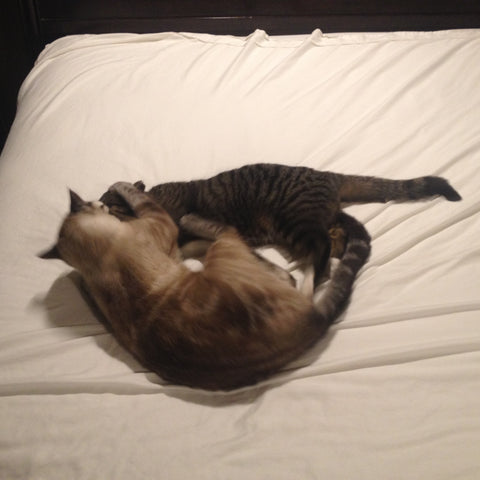
So as you can see, there are three main points to my process here.
- Your current cat and your new cat have been getting used to being in the same house and are familiar with each other's smells. The cats are about ready for a face to face introduction.
- You will need to use a toy that allows you to control the distance between the two cats. I have found laser pointers and wand toys to be great to use.
- Provide the cats a "fort" to use as cover, which will allow either cat to retreat if the situation starts to feel too threatening. Some things that can work well as a fort are boxes, bags, pillows, a sheet of long paper, a piece of fabric, a cat tunnel, or a cat bed such as the Cat Ball® cat bed.




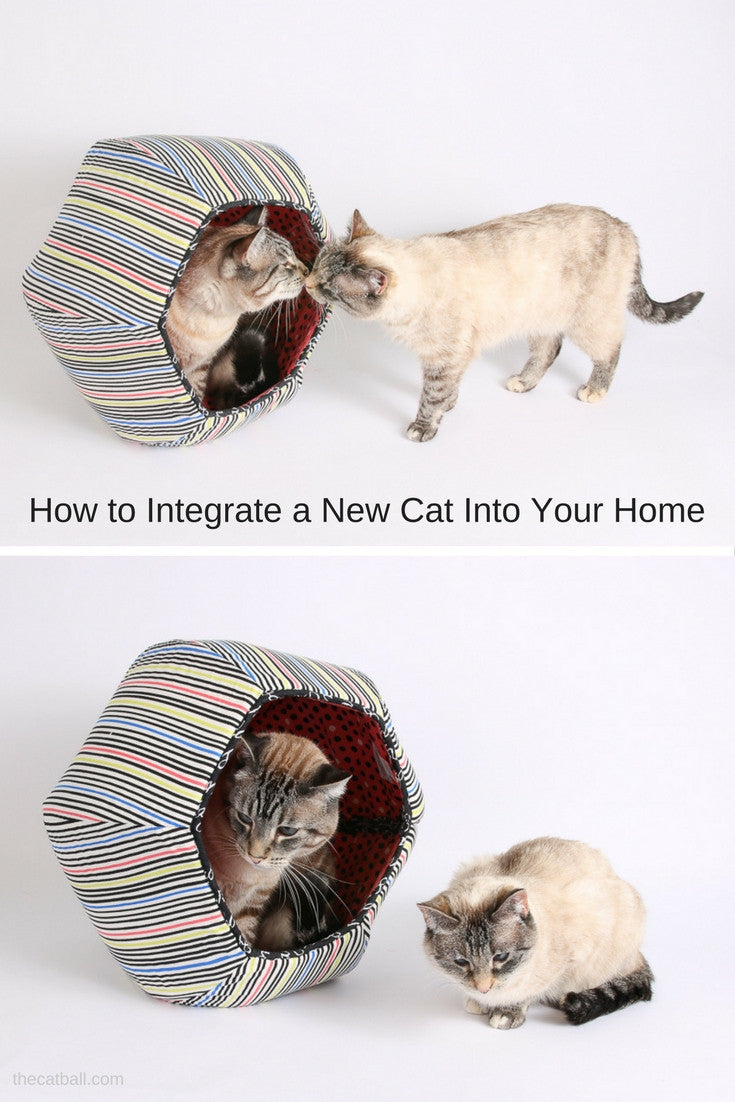
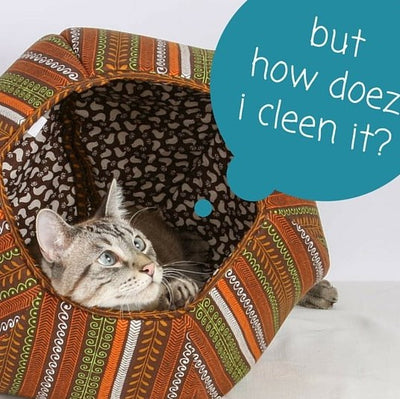

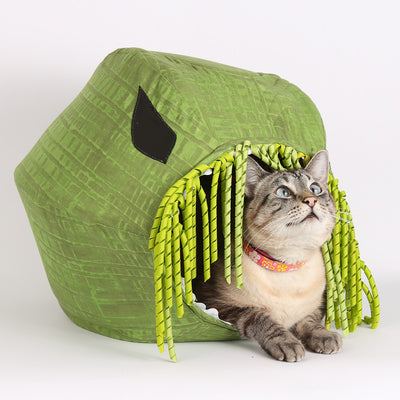
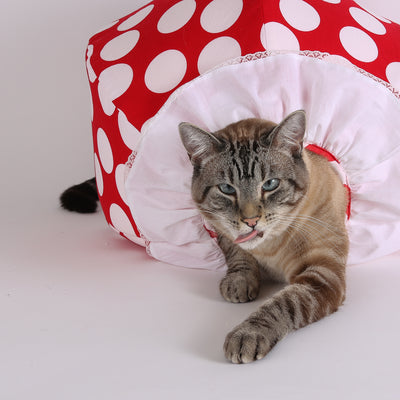
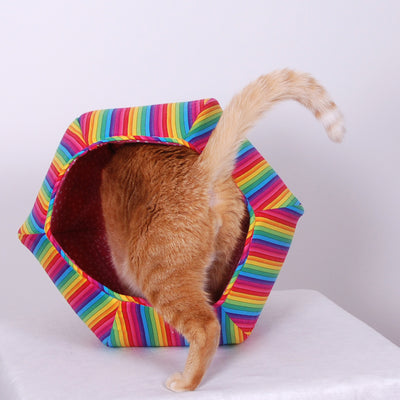
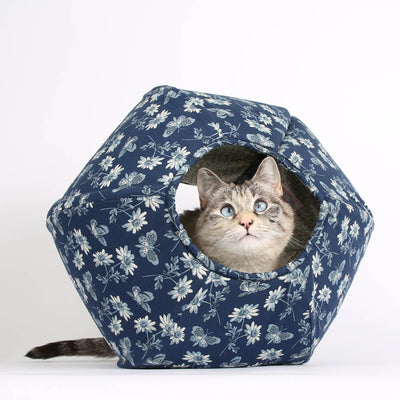
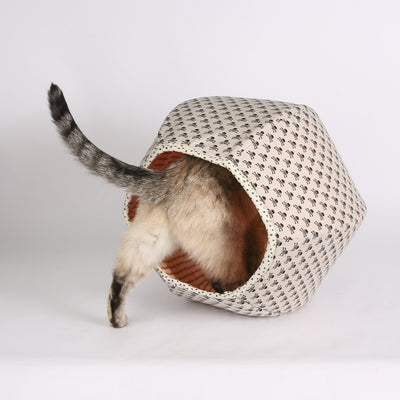
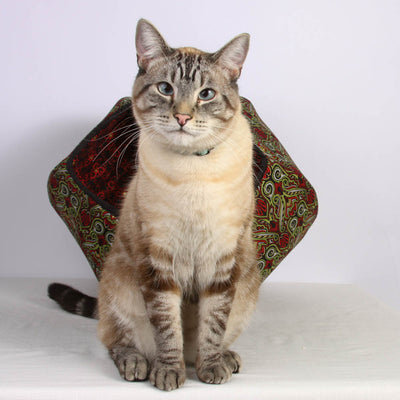
Leave a comment